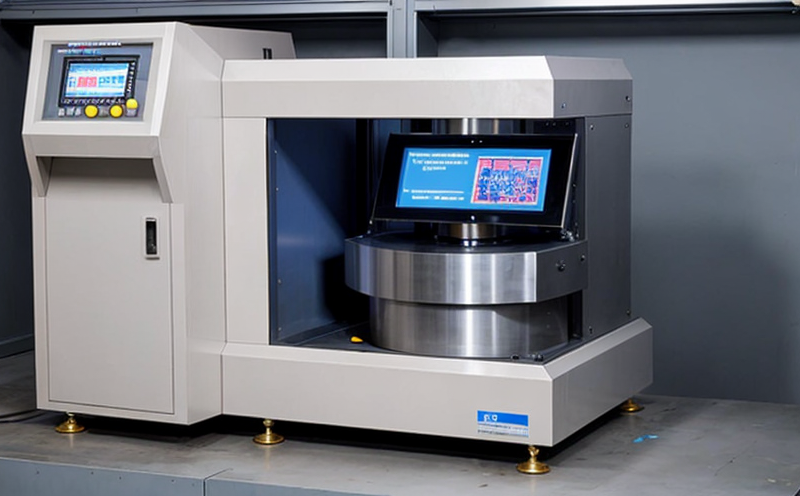ISO 17296-3 Dimensional Accuracy Testing for Additive Manufacturing
The ISO 17296 series provides guidelines and standards for the dimensional accuracy testing of parts produced by additive manufacturing (AM) processes. The third part, specifically ISO 17296-3: Dimensional Accuracy Testing of Parts Produced by Additive Manufacturing Processes, establishes a framework for ensuring that AM parts meet the required tolerances set by design specifications and industry standards.
This testing is crucial in industries where precision and repeatability are paramount, such as aerospace, automotive, medical device manufacturing, and consumer electronics. The test ensures that each part produced using AM technology adheres to the precise dimensions specified during the design process, thereby guaranteeing product quality and performance.
The dimensional accuracy of an AM part is influenced by several factors including the type of material used, the geometry of the part, the AM process selected (selective laser sintering, electron beam melting, direct metal laser sintering, etc.), and post-processing techniques. The testing methodology outlined in ISO 17296-3 helps to standardize these measurements so that they are consistent across different laboratories and facilities.
The dimensional accuracy test typically involves the following steps:
- Selection of a suitable measurement tool or method
- Preparation of the part for testing, which may include cleaning and removal of support structures
- Performing measurements using the chosen equipment to compare actual dimensions against nominal design values
- Evaluating the results according to specified tolerance limits defined by ISO 17296-3
Measurement tools commonly used for this test include coordinate measuring machines (CMMs), laser scanners, and micrometers. The choice of tool depends on the complexity and size of the part being tested.
| Part Feature | Measurement Tool | Purpose |
|---|---|---|
| Small intricate features | Laser scanner | To capture minute details |
| Large flat surfaces | CMM | To ensure uniformity and accuracy over large areas |
| Repetitive or critical dimensions | Micrometer | To provide precise measurements in a repeatable manner |
The acceptance criteria for dimensional accuracy testing are based on the tolerances defined by the part’s design specifications. These tolerances may vary depending on the application of the part, but typically, deviations exceeding 10% of the specified tolerance range would be considered non-compliant.
Understanding the importance of this test is critical for quality managers and compliance officers who need to ensure that all AM parts meet the necessary standards. For R&D engineers, this test provides valuable insights into process control and material properties. Procurement teams benefit from knowing which suppliers adhere to these stringent testing protocols, ensuring they are working with reliable partners.
By adhering to ISO 17296-3, manufacturers can enhance their reputation in the market for producing high-quality AM parts that meet or exceed customer expectations. This standardization also facilitates easier integration of AM processes into existing manufacturing workflows, streamlining operations and reducing costs associated with rework or scrap.
Industry Applications
The ISO 17296-3 dimensional accuracy testing is widely utilized across various industries where precision is critical. Here are some key areas:
- Aerospace: Ensuring that parts produced for aircraft and spacecraft meet stringent weight and performance requirements.
- Automotive: Verifying the fitment and function of AM components like engine parts, body panels, and structural elements.
- Medical Device Manufacturing: Guaranteeing biocompatibility and proper fitting of prosthetics, implants, and surgical instruments.
- Consumer Electronics: Ensuring small, intricate parts in devices such as smartphones, wearables, and drones function correctly.
| Industry | Main Application | Example Part |
|---|---|---|
| Aerospace | Engine turbine blades | Titanium alloy blades for jet engines |
| Automotive | Body panels | Aluminum or carbon fiber body parts |
| Medical Device Manufacturing | Surgical instruments | Bespoke titanium implants |
| Consumer Electronics | Micro components | Electronic connectors for smartphones |
These industries rely heavily on AM to produce complex parts that would be difficult or impossible to manufacture using traditional methods. By ensuring dimensional accuracy through ISO 17296-3 testing, these manufacturers can maintain the highest standards of quality and reliability.
Why Choose This Test?
The choice to implement ISO 17296-3 dimensional accuracy testing for additive manufacturing is driven by several key factors:
- Regulatory Compliance: Many industries are subject to strict regulations that require adherence to specific standards. Adhering to ISO 17296-3 ensures compliance with international norms.
- Precision and Reliability: AM parts must meet the exact specifications defined by designers. This test guarantees that each part is produced within acceptable tolerances, enhancing overall product reliability.
- Quality Control: By testing dimensional accuracy regularly, manufacturers can identify and address any inconsistencies in their processes early on, minimizing defects and rejections downstream.
- Process Improvement: Continuous evaluation of parts through ISO 17296-3 helps refine AM processes, leading to more efficient and effective production methods.
The test also provides a level playing field for all manufacturers, ensuring that regardless of the facility or equipment used, the quality standards remain consistent. This transparency fosters trust among customers and stakeholders, enhancing brand reputation.
Use Cases and Application Examples
The ISO 17296-3 dimensional accuracy test is applicable in numerous scenarios:
| Use Case | Description |
|---|---|
| Prototype Development | Evaluating the fit and function of prototype parts before full-scale production. |
| Quality Assurance | Ensuring that each part produced meets design specifications, facilitating smoother production processes. |
| Process Validation | Verifying that AM processes are consistently producing parts within specified tolerances. |
| New Material Introduction | Evaluating the dimensional accuracy of new materials introduced into existing manufacturing lines. |
In addition to these use cases, ISO 17296-3 is essential for any company looking to establish a robust quality management system. By incorporating this test into their workflow, companies can demonstrate their commitment to excellence and build customer confidence in the products they produce.





